Backpacking in the mountains requires certain knowledge about the nature, certain experience and habits that are acquired over time. The most convenient way to start acquiring this additional information, is by reading articles such as this one about backpacking. This article is a manual, instruction on how to act while backpacking in the rain.
It is intended for all backpackers, less experienced ones, as well as the more experienced ones who want to refresh their memory, or simply enjoy a good read.
The whole point of the article is for backpackers to realize that backpacking in the rain represents a desire filled with challenges, researching and experiencing an extraordinary world by staying safe. It represents an environment where people could indeed push their boundaries, get to know and understand fellow backpackers, relax and find his own peace.
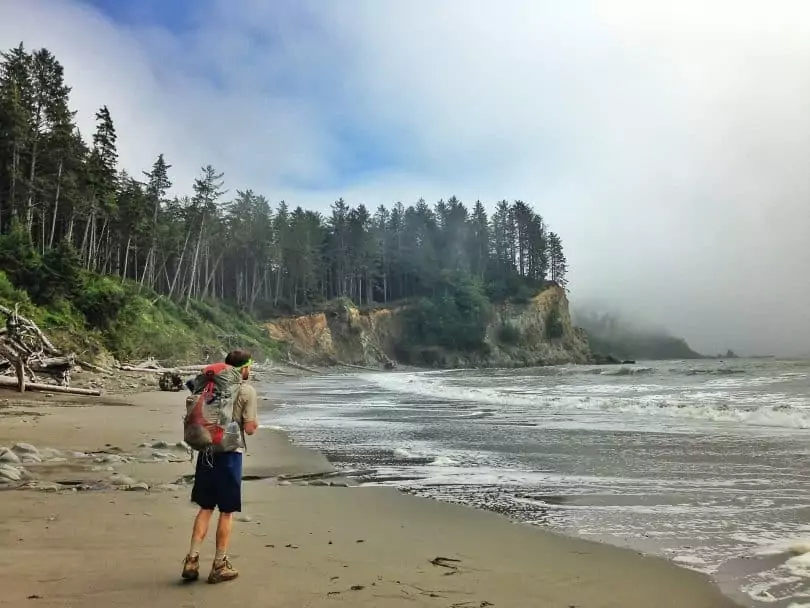
Before going up on the mountain, especially in these weather conditions you are advised to reassess your own abilities. Your health condition, your physical shape, strength, interest and motives. You could choose to go for a recreational hike without greater ambition or you could decide to go backpacking regardless of the weather conditions.
Some backpackers that choose to go on a long trail backpacking trip, have no other option but learning to survive and enjoy even these moments in the nature. However, this is not an easy experience to go through and it definitely requires some preparation.
Gear as your primal defense mechanism against rainy weather
The most important strategy to apply is getting yourself a nice waterproof backpacking gear that will get you through the process. Before taking your backpacking trip, if you believe that there is a chance for rain, reconsider ever part of your equipment. You will want to adjust your gear to the potential weather circumstances.
Clothes
Your outer shell clothing is the first thing you should reconsider. A soft shell jacket will do just fine in a light rain, but what if there is a heavy rain? When in nature for a longer time, you should be prepared for everything. For this reason, we recommend that you get a hard shell waterproof jacket with good breathability technology, so that you don’t get sweaty inside.
It is especially important that the hard shell jacket, comes with a rain proof hat. Some trails are getting difficult to follow, especially in a rainy day. And a clouded vision would not help on this subject. If you have already purchased a jacket which does not have a rain hat, make sure you get yourself one before going on your trip. It will certainly be the most wise gear investment you have made.
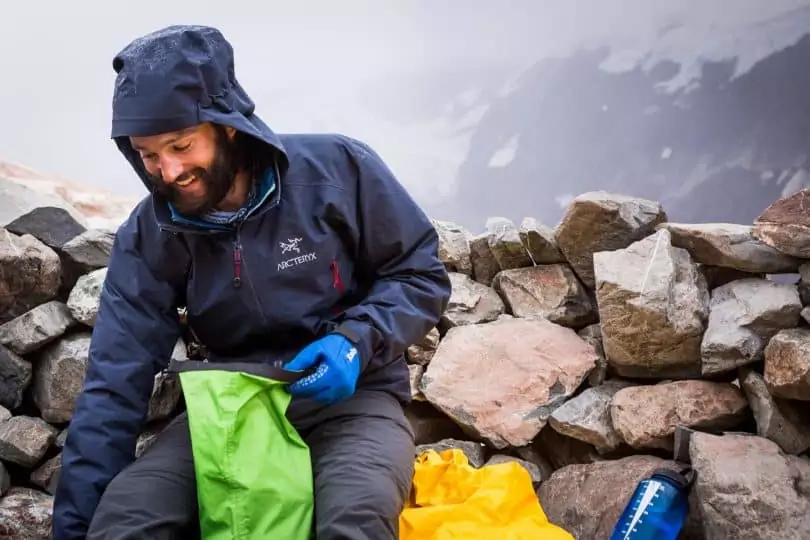
You should always feel comfortable in the clothes you are wearing, regardless of the weather conditions. After all, it might not be so temporary condition. Sometimes it can rain for days, and instead of waiting for the clouds to pass, you could learn to feel comfortable and peaceful in this weather.
When it comes to clothes and any kind of moisture, it is better to avoid using highly absorbing materials such as cotton. Cotton takes very long time to dry and if somehow you get it wet, it will stay that way until the weather conditions change for the better. Until then, it might be too late.
Instead, it might be even better to use nylon or other synthetic materials that have low absorption power. And of course, wool as a natural alternative is clothing that has natural water resistant properties up to some point. For more tips on how to choose the best waterproof jackets, see our article on this topic.
Half of the heat, we are losing through the head and feet. For this reason, if some of these body parts are not well protected, your health could get in serious jeopardy. That said, it is important that your footwear is great quality, and can endure harsh weather conditions. This goes for every backpacker who plans more than a weekend trip.
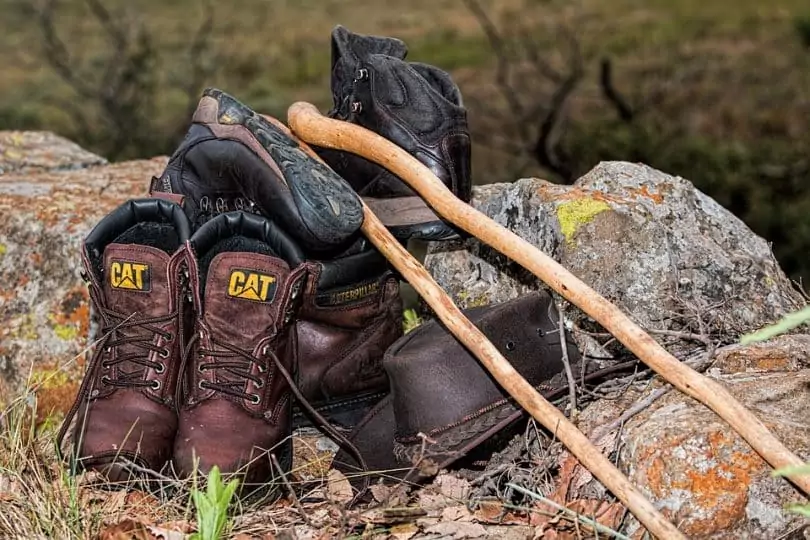
However, in mild weather conditions, you are going to need footwear that dries off quickly since getting wet is not so big of a deal when the temperatures are dropping. Nevertheless, in cold weather, you should avoid getting your feet wet by all causes. Choose shoes that will be comfortable, completely waterproof, and will keep your feet dry throughout the whole trip.
However, moisture is not the only issue when it comes to backpacking. The terrains are also changing their nature. The rocks get slippery, and the ground turns into mud, which is also slippery. For this reason, you should also pay attention to the stability of the underfoot in rainy weather.
A pair of rain pants is a life saver in rainy days up in the mountain. However, if you are planning a longer trip you will need highly breathable pants for when the temperatures drop and the sun shines too bright. When shopping for rain pants you should look for a pair that provides you protection from the elements. Meaning they should be completely waterproof and keep you warm and cozy inside. Our article on the top hiking pants for rainy weather will help you a lot, so check it out.
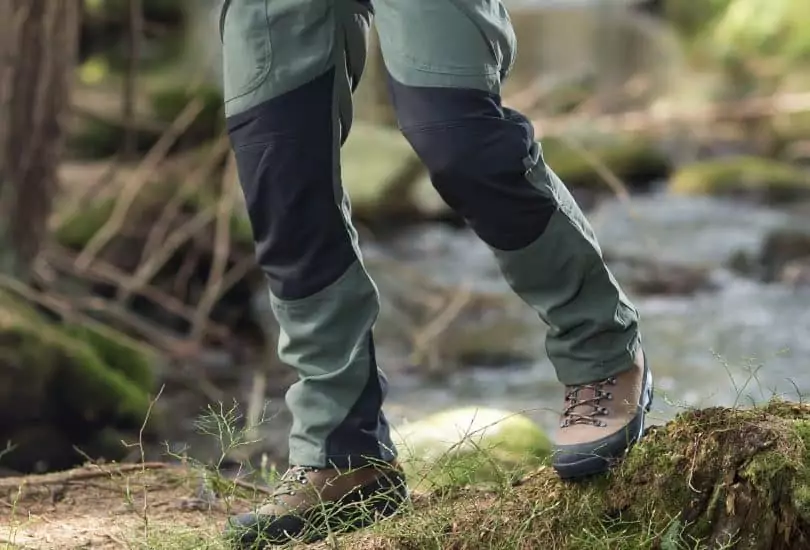
If you are not a person who blisters easily, you probably believe you are not going to need blister supplies. However, when the weather gets wet, your skin starts to naturally adapt to the new weather conditions, by becoming gentler. And if you are backpacking for a long time, there is a great probability that something like this will happen to you.
Even if it doesn’t, it is better to be prepared. For this reason, packing with you a first aid kit and adding blister remedies might prove to be a good idea.
Socks are the most underestimated piece of gear for every backpacker. Contrary to the common belief that you could wear any type of socks while backpacking, hiking socks do make a great difference. They are designed in a specific way that helps your feet eliminate the excess moisture faster and better than the regular ones. They are also capable of lowering the chances to blisters.
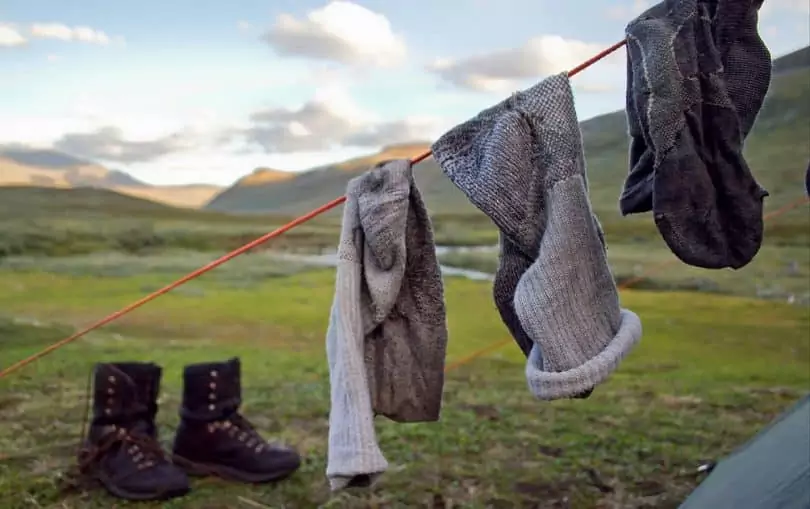
Should you pack an umbrella?
The trail type you are about to take will answer this question better than any literature ever could. Although an umbrella is a nice addition to your backpacking gear, the question remains if you are going to use it. Umbrellas are more spacious and they cover more space around your body, contrary to the rain jackets that only cover your body.
However, you are going to have to carry the umbrella in your hands for a day, or maybe even several days. For this reason, umbrellas might be more suitable for hiking than backpacking. If this doesn’t convince you, consider the trail you are backpacking on. If the trail is dense with trees, it might not even fit an umbrella.
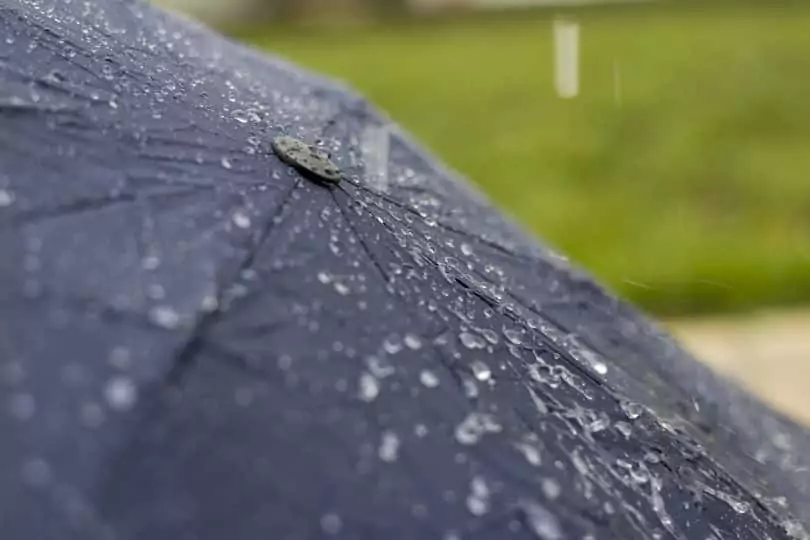
Even if it does, you could damage it in the first few hours of using it. Having this in mind, it is only logical to assume that umbrella is convenient to pack and use in certain situations:
- If you are planning on hiking instead of backpacking.
- If you have the luxury of waiting for a few hours for the rain to pass, and then continue on the trail. Even if you are up to this, what would you do if it rains for days? You couldn’t wait for the rain to pass for days; neither could you carry the umbrella in your hand for days.
- If the trail is open and it is not a tree dense area.
Anything out of these situations will leave you with the conclusion that packing an umbrella in your backpack would be carrying around dead weight of an object you are not going to use, or it is not as essential to your gear as you thought.
If the terrain is rocky, it is safe to assume that it will be slippery once it rained. Holding an umbrella in your hand in this case would be a life threatening action. Or if the terrain requires walking with trekking poles, both of your hands would be busy, and a rain jacket would be much more effective.
Nevertheless, there are situations when an umbrella is useful. Many rain jackets could endure a heavy rain, but a wet snow is something more complicated. It falls on your shoulders and head, and it stays there for the whole day. There are not many rain jackets that could endure this.
If yours is of that high of a quality, then without a doubt, rain jacket is still your option number one. However, if it isn’t an umbrella could keep you dry during the whole day, or part of the day when it is snowing.
Maintaining body temperature and your spirit
The main problem with backpacking in the rain is that the temperatures drop and you are feeling wet and cold. Even though when you are cold, the best thing to do is to keep going, it can be pretty unpleasant feeling. Hiking is only pleasant when all of your body requirements are satisfied. Maintaining your body temperature is a big part of it, but in these weather conditions this could easily turn into a very difficult task.
Even though moving is good when the weather is cold, you should be careful not to sweat too much because this will add additional moisture to your clothes which will be impossible to evaporate in the next few hours while there is moisture outside as well.
In order to prevent this from happening you should use the ventilation technology as previously suggested, however it is also important that you dress in layers and maintain your body temperature with the help of these layers.
Since some of your body requirements are not satisfied, your level of comfort will significantly drop. In order to lower the discontent from this condition, make sure you compensate with other comfort additions such as: keeping your body warm, make sure you eat at the right time, stay dry if possible and be careful not to dehydrate.
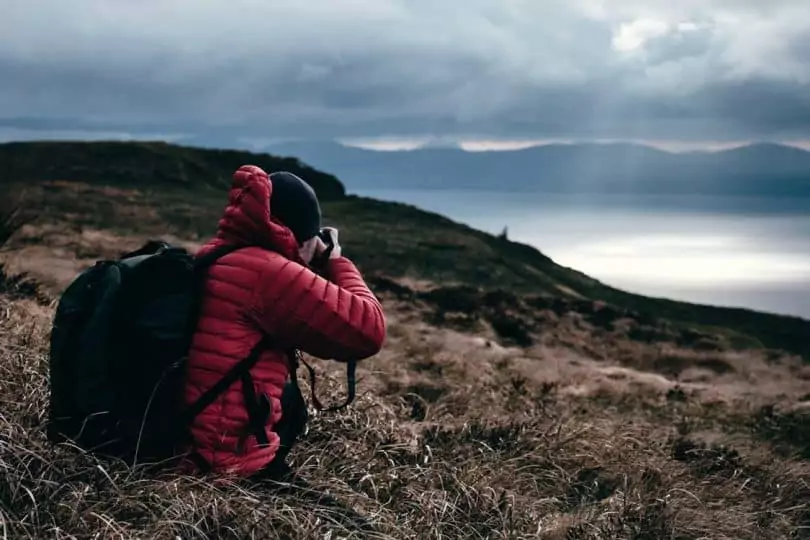
Another inconvenience that is a result of this weather condition is that your body will wear down more easily because the air gets moister and your breaths shorter. In order to avoid this, make sure you regulate your pace.
Even though it is not possible to take long breaks because of the low temperatures and the increased ventilation of the body when you stop for a break, you should still take breaks. If needed, take shorter breaks, but make them more often.
And of course, if this becomes intolerable for you or any person of your group, stop immediately and make him as much comfortable as you can. People usually tend to stay away from others when they are in distress. If any of your friends shown signs of hypothermia, chances are that no one is going to even notice the first signs.
For this reason, when a group of people is moving together, always verbally ask yourselves if everyone is okay. Also, make sure you take care of each other’s physical state.
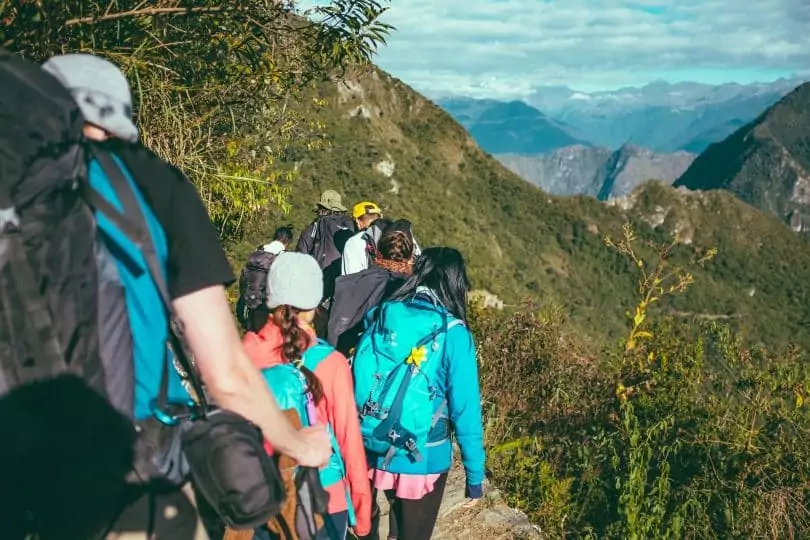
Although there is a possibility that it rains all day, a backpacker should be able to tell the difference if it is just a cloud and the rain will pass shortly or it will rain the whole day. If it is just a cloud, you could easily tell with just a look of the sky.
Also, the rain that comes with a cloud is a heavy rain with big drops. On the other side, if the rain is to continue for the whole day, or maybe several days, the rain drops are usually smaller and the intensity is decreased. Although this is the general rule for mountain weather, it is not always the case.
If you want to know something more about forecasting the weather, make sure you make a thorough research before going backpacking. Some people who have been in the mountains their whole life could tell whether it is going to rain for a day or for an hour just by looking at the sky. Others require some literature access.
Backpack liner
Since we’ve got you all covered, your backpack should also be covered with a waterproof liner that will protect your stuff inside. A backpack liner is an additional waterproof material, besides your backpack where you can put all of your stuff before packing them in your backpack. A good quality backpack liner could keep your stuff dry even if you accidentally drop your backpack into a pond of water.
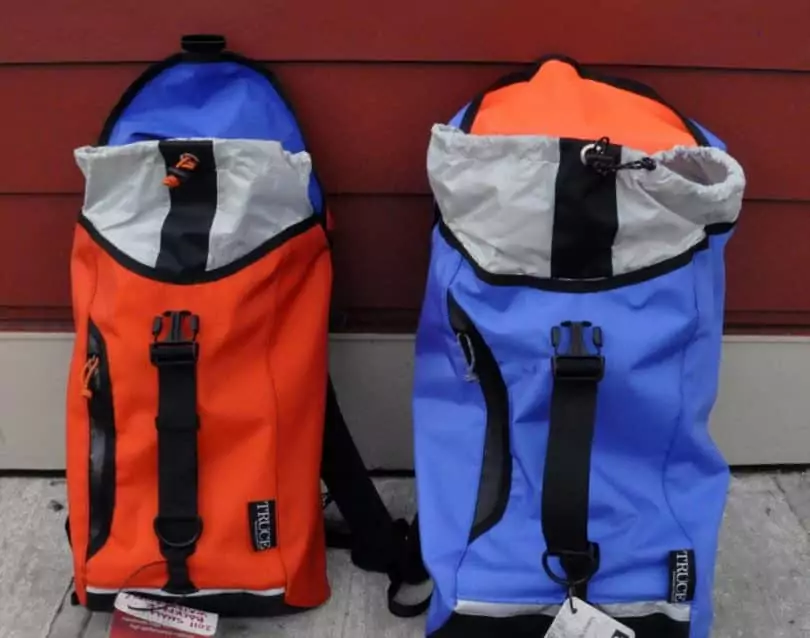
However, there is some stuff that you are going to need to pack outside the liner because of an easy access to them. Remember to protect these items when it starts to rain if water could harm them. To keep all your camping gear dry, our article on the best waterproof backpacks for hiking is a must-read!
Setting up a tent in rainy conditions
Setting up a tent in a rainy weather could be tricky. However, with the right tips you will be able to do it properly. It is logical that the lower grounds could absorb most of the moisture and if you set up the tent there, you will end up sleeping in the mud.
Also, if you set it up on a place that is extremely wet, when you set it up, all the evaporation from underneath it will come inside your tent and it will for a condensation. Placing your tent on a higher and drier spot on the other side is much better and your stay will be more pleasant.
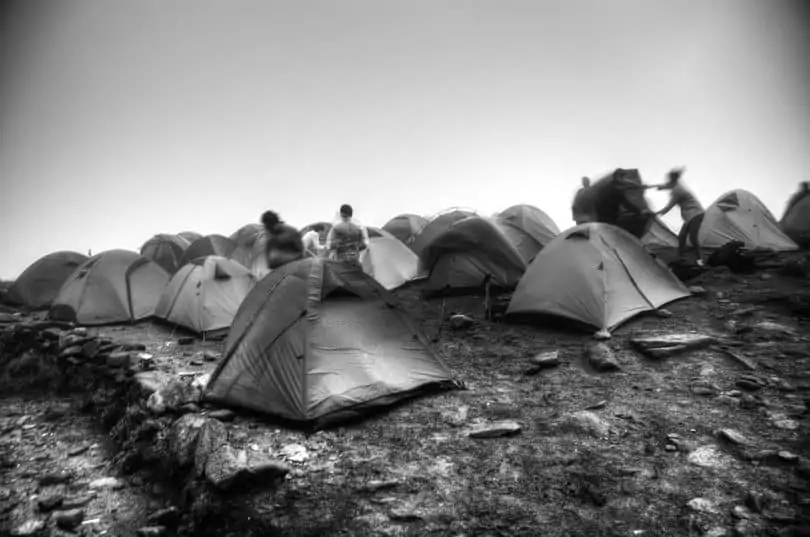
The problem is, while it is raining or after it had rained, places that are not extremely wet are harder to find. For this reason, it is recommended that you look for a tent spot under a large and dense tree. If you are able to find such a tree, you will receive double protection from it. It will provide coverage from the rain and you will also be warmer inside. Trees usually have long and spread root system.
For this reason, the spot would also be drier, since the branches are absorbing most of the moisture. They also lower the condensation inside the tent since they are creating a small isolation and the temperatures are dropping slower than other ground parts.
A small and fragile tree on the other side should be avoided by any chance. There is a great probability that a branch could fall on your tent and potentially hurt you.
Even though we already mentioned that you should avoid low areas, you should especially avoid ones that are between high terrains. When it is raining, the ground is slippery as well. The land is eroding by the pressure of the water and it could end up in the lower area.
However, if you must place your tent in a lower area make sure there are trees on the higher terrain. If this is the case, the ground above you is much less likely to erode since the tree’s root system is connected to the ground and it is protecting the ground from erosion. Here’s some important tips and tricks on how to make your tent waterproof, read our article on this one.
Final thoughts on this topic
Even though in this article we have been concentrating on the negative sides of the rain while backpacking, rain could actually be a beautiful natural phenomenon. Sometimes the weather could affect your current mood, especially if you are out in the open.
However, you should take this as a nice but different than planned adventure and make an effort to change your mood for the better. Be open to the beauty of the new, unexpected situation and try thinking of other activities you could do as a group or if you are with a special someone, it could even be considered as a romantic situation.
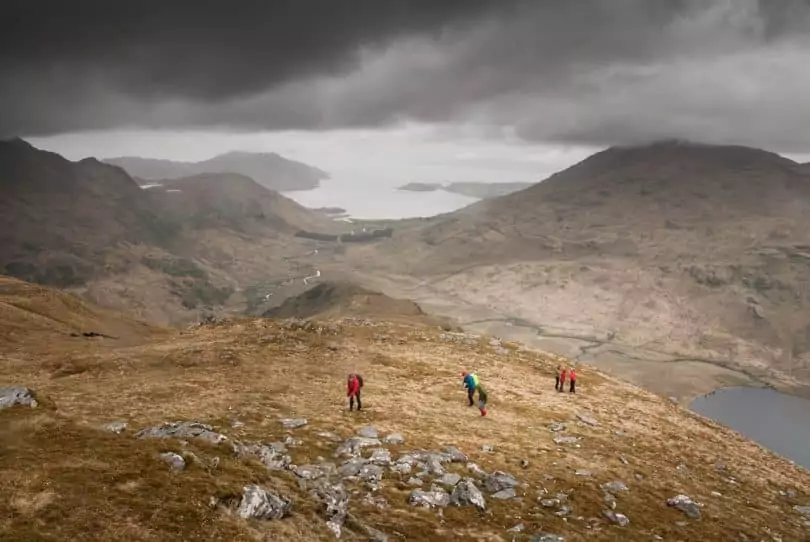
If you have something to add to the subject, leave us a comment in the comment section below. We are always happy to hear from our fellow backpackers. Relax, breath in the clean air, and embrace the rain!

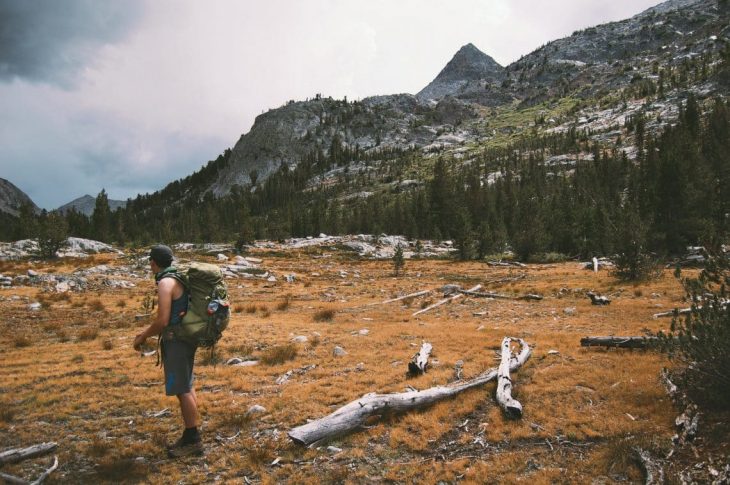
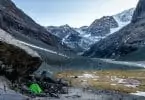



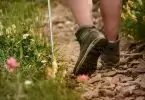

I liked how you covered how to set up a tent in the rain, that’s not something I would have thought of. But will setting up your tent under a tree pose a lightning hazard?
If your poles are made of metal, this can be possible. You may not want to set up near a tree if the weather conditions are too bad. You don’t want to risk any damage to you or your tent. This is where common sense will help.
This something we will have to face anyhow. If you can provide with a set of cloths like in other articles which we can buy that would be really helpful.
Check out the other articles and see if those work for you.